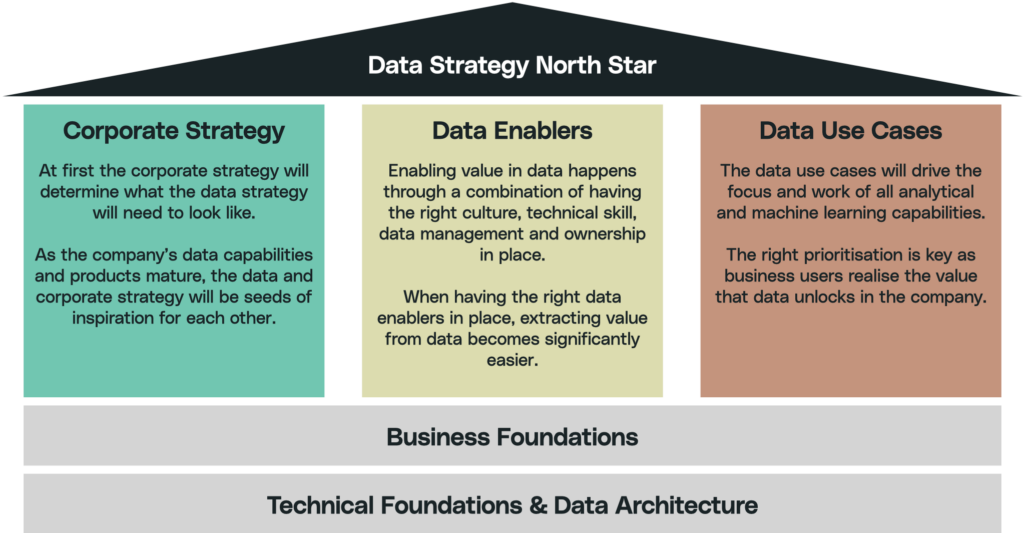“Strategy involves plans to achieve well defined objectives”
When we talk about a data strategy in comparison to corporate strategy; the purpose remains the same, only the contents and execution differ. A data strategy should always be connected to or driving the defined objectives of the corporate strategy of the organisation. Similar to sailing, it’s essential to roughly know where you aspire to go before you embark on your journey.
Latitude’s Aspiration Model helps to drive value from data.
Terms such as ‘maturity’ are often used to describe the complexity level of how data analytics is implemented in an organisation. In human contexts, maturity means staying true to oneself and taking responsibility without drawing excessive comparisons or suggesting value differences. In many organisations, data is viewed as a cost center, receiving limited attention or having no clear goal. Without clear aspirations, it’s challenging to determine a starting point or direction. So, the primary question becomes: “What do you aspire to achieve with data”
At Latitude, we perceive things from a unique angle. We believe that with the right approach and clear aspirations, data can shift from being a cost center to a profit center.

Depending on where your organisation is currently positioned along our aspirational model, the priorities and complexity of data use cases differ.
The processes underlying Latitude’s Aspirational Model.
Below table provides an overview of the varying stages of data integration within organisations, illustrating the transformation from a nascent stage of data integration to a more advanced, proactive approach where data becomes a central driver of business innovation and strategy.
It categorises organisations into three distinct phases based on their maturity in data utilisation: those where data is not integrated into business strategy, those using data as an amplifier of business strategy, and finally, those leveraging data as a business driver or innovator.
Each phase is characterised by specific identifiers, actions, data cleanup approaches, percentages of low-quality data, people involved, processes, and technologies. It serves as a guide to understanding where organisations lie on the spectrum of data integration and what steps can be taken to advance to higher levels of data-driven business strategy.

How it all comes together in Latitude’s Data Strategy Temple.

Latitude’s Data Strategy Temple presents a methodical model for orchestrating a data strategy. The ‘Data Strategy North Star’ embodies the ultimate objective, setting the course for the journey ahead. Beneath, The trio of pillars—Corporate Strategy, Data Enablers, and Data Use Cases—translates strategic intent into actionable data insights. Grounded by Business and Technical Foundations, the temple encapsulates a comprehensive strategy, translating strategic intent into actionable data insights and demystifying the intricate choreography of a successful data strategy.
Conclusion
Data strategy stands as a cornerstone in guiding businesses towards their objectives. Just as a sailor needs a compass, organisations require a clear data strategy that aligns with their overarching corporate goals. Recognising the potential of data, and shifting its perception from a mere cost center to a profit generator, can unlock significant value. Whether aiming for top-line growth through offensive strategies or focusing on cost-saving defensive tactics, the power of data cannot be understated. However, capitalising on this potential mandates a structured approach: understanding the business’s current data maturity, aligning corporate strategies with data aspirations, and addressing the essential triad of people, process, and technology. In a world driven by information, a well-crafted data strategy isn’t just beneficial—it’s indispensable.
Here at Latitude, we have the know-how to translate these AI advancements into tangible business value. Curious about the possibilities? Make sure to reach out!
For a deeper understanding of integrating Artificial Intelligence into your business realm, delve into our white paper: Beyond the Hype – A practical guide for AI integration in Business.